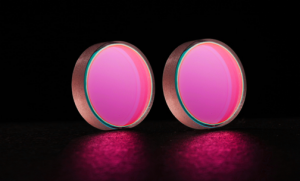This product was successfully added to cart!
Infrared Optics
| Model | Substrate | Type | Diameter(mm) | Thickness(mm) | Coating | Unit Price | ||
|---|---|---|---|---|---|---|---|---|
| MORE+LESS- | CH9015A00000 | Silicon | Infrared Aspheric Lens | 12∽450mm | Request Quote |
|
||
| MORE+LESS- | CH9015B00000 | Silicon | Infrared Aspheric Lens | 12∽450mm | Request Quote |
|
||
| MORE+LESS- | CH9016A00000 | Zinc Selenide | Infrared Aspheric Lens | 12∽450mm | Request Quote |
|
||
| MORE+LESS- | CH9016B00000 | Zinc Selenide | Infrared Aspheric Lens | 12∽450mm | Request Quote |
|
||
| MORE+LESS- | CH9017A00000 | Zinc Sulfide | Infrared Aspheric Lens | 12∽450mm | Request Quote |
|
||
| MORE+LESS- | CH9017B00000 | Zinc Sulfide | Infrared Aspheric Lens | 12∽450mm | Request Quote |
|
||
| MORE+LESS- | CH9018A00000 | Chalcogenides | Infrared Aspheric Lens | 12∽450mm | Request Quote |
|
||
| MORE+LESS- | CH9018A00000 | Chalcogenides | Infrared Aspheric Lens | 12∽450mm | Request Quote |
|
||
| MORE+LESS- | CH9010A00000 | Silicon | Infrared Spheric Lens | 12∽450mm | Request Quote |
|
||
| MORE+LESS- | CH9010B00000 | Silicon | Infrared Spheric Lens | 12∽450mm | Request Quote |
|
||
| MORE+LESS- | CH9011A00000 | Zinc Selenide | Infrared Spheric Lens | 12∽450mm | Request Quote |
|
||
| MORE+LESS- | CH9011B00000 | Zinc Selenide | Infrared Spheric Lens | 12∽450mm | Request Quote |
|
||
| MORE+LESS- | CH9012A00000 | Zinc Sulfide | Infrared Spheric Lens | 12∽450mm | Request Quote |
|
||
| MORE+LESS- | CH9012B00000 | Zinc Sulfide | Infrared Spheric Lens | 12∽450mm | Request Quote |
|
||
| MORE+LESS- | CH9013A00000 | Chalcogenides | Infrared Spheric Lens | 12∽450mm | Request Quote |
|
||
| MORE+LESS- | CH9013B00000 | Chalcogenides | Infrared Spheric Lens | 12∽450mm | Request Quote |
|
Infrared optics is a branch of optics that deals with the study and manipulation of infrared (IR) light, which is electromagnetic radiation with longer wavelengths than visible light. The infrared spectrum spans wavelengths from approximately 700 nanometers to 1 millimeter, and it is divided into several subregions: near-infrared (NIR), short-wave infrared (SWIR), mid-wave infrared (MWIR), long-wave infrared (LWIR), and far-infrared (FIR).
Infrared optics has numerous applications across various fields, including:
- Thermal Imaging: Infrared optics is widely used in thermal imaging cameras and devices, allowing us to see and measure heat emissions from objects and environments. This has applications in night vision, security, industrial inspection, and medical imaging.
- Spectroscopy: Infrared spectroscopy is a technique that uses infrared light to analyze the molecular composition of substances. Different molecules absorb and emit specific infrared wavelengths, which can be used to identify and quantify compounds in samples. This has applications in chemistry, biology, and materials science.
- Remote Sensing: Infrared sensors are used in remote sensing applications to gather information about the Earth’s surface and atmosphere. This is particularly useful in environmental monitoring, weather forecasting, and geological studies.
- Communication: Infrared communication is used in technologies like infrared remote controls, data transmission between devices (e.g., IrDA), and even for short-range wireless communication.
- Laser Technology: Infrared lasers have applications in fields like medicine (surgery, diagnostics), material processing, communications, and scientific research.
- Defense and Security: Infrared optics play a crucial role in military applications such as target detection, missile guidance, and reconnaissance, as well as in civilian security systems.
- Astronomy: Infrared telescopes and detectors are used to observe celestial objects that emit primarily in the infrared spectrum, allowing astronomers to study phenomena that are otherwise invisible in visible light.
Infrared optics involves the design, fabrication, and use of optical components and systems that can manipulate infrared light. These components include lenses, mirrors, filters, prisms, beamsplitters, and detectors, all optimized for the specific infrared wavelengths of interest. Materials suitable for infrared optics often differ from those used in visible optics, as not all materials are transparent to infrared light. Common materials include germanium, silicon, zinc selenide, and various infrared-transmitting glasses.
In summary, infrared optics is a multidisciplinary field with a wide range of practical applications, from improving our ability to see in the dark to analyzing complex molecular structures and advancing scientific research.
-

Skype
-

Whatsapp
-

Top
- English
- French
- German
- Portuguese
- Spanish
- Russian
- Japanese
- Korean
- Arabic
- Irish
- Greek
- Turkish
- Italian
- Danish
- Romanian
- Indonesian
- Czech
- Afrikaans
- Swedish
- Polish
- Basque
- Catalan
- Esperanto
- Hindi
- Lao
- Albanian
- Amharic
- Armenian
- Azerbaijani
- Belarusian
- Bengali
- Bosnian
- Bulgarian
- Cebuano
- Chichewa
- Corsican
- Croatian
- Dutch
- Estonian
- Filipino
- Finnish
- Frisian
- Galician
- Georgian
- Gujarati
- Haitian
- Hausa
- Hawaiian
- Hebrew
- Hmong
- Hungarian
- Icelandic
- Igbo
- Javanese
- Kannada
- Kazakh
- Khmer
- Kurdish
- Kyrgyz
- Latin
- Latvian
- Lithuanian
- Luxembou..
- Macedonian
- Malagasy
- Malay
- Malayalam
- Maltese
- Maori
- Marathi
- Mongolian
- Burmese
- Nepali
- Norwegian
- Pashto
- Persian
- Punjabi
- Serbian
- Sesotho
- Sinhala
- Slovak
- Slovenian
- Somali
- Samoan
- Scots Gaelic
- Shona
- Sindhi
- Sundanese
- Swahili
- Tajik
- Tamil
- Telugu
- Thai
- Ukrainian
- Urdu
- Uzbek
- Vietnamese
- Welsh
- Xhosa
- Yiddish
- Yoruba
- Zulu
- Kinyarwanda
- Tatar
- Oriya
- Turkmen
- Uyghur



 Products
Products

